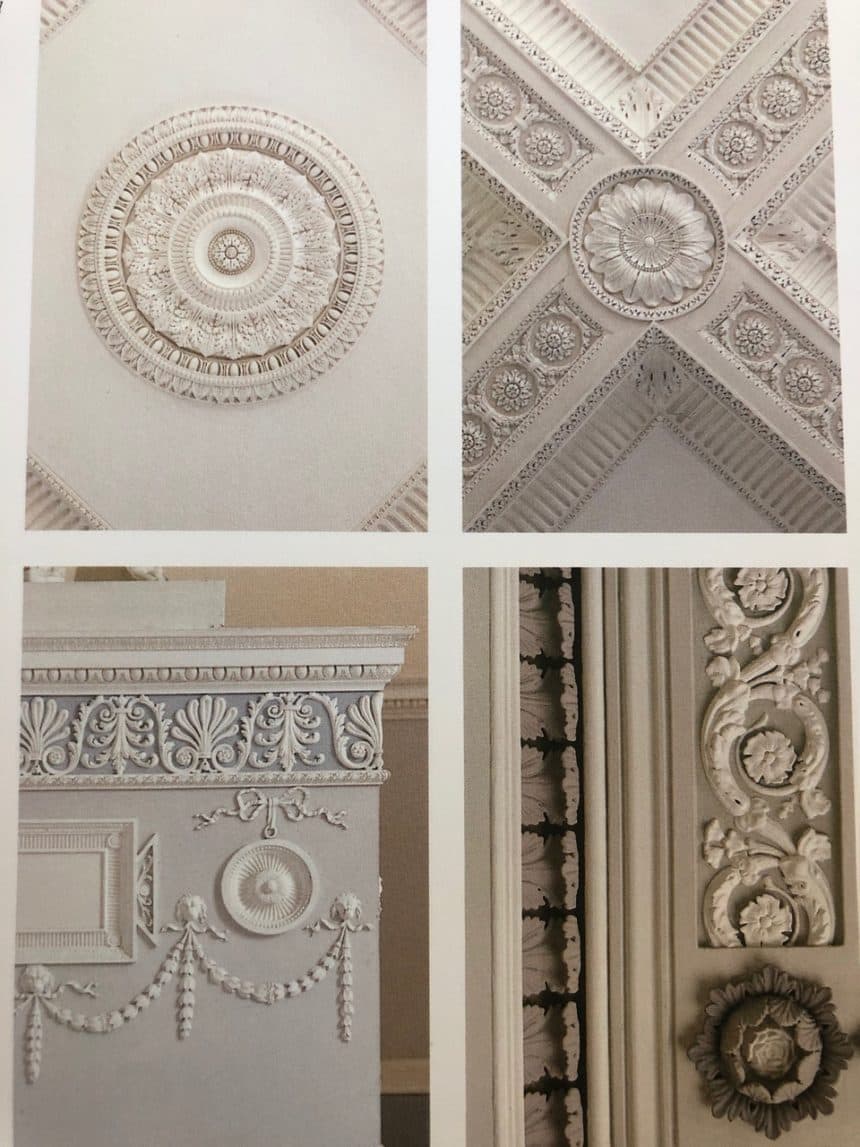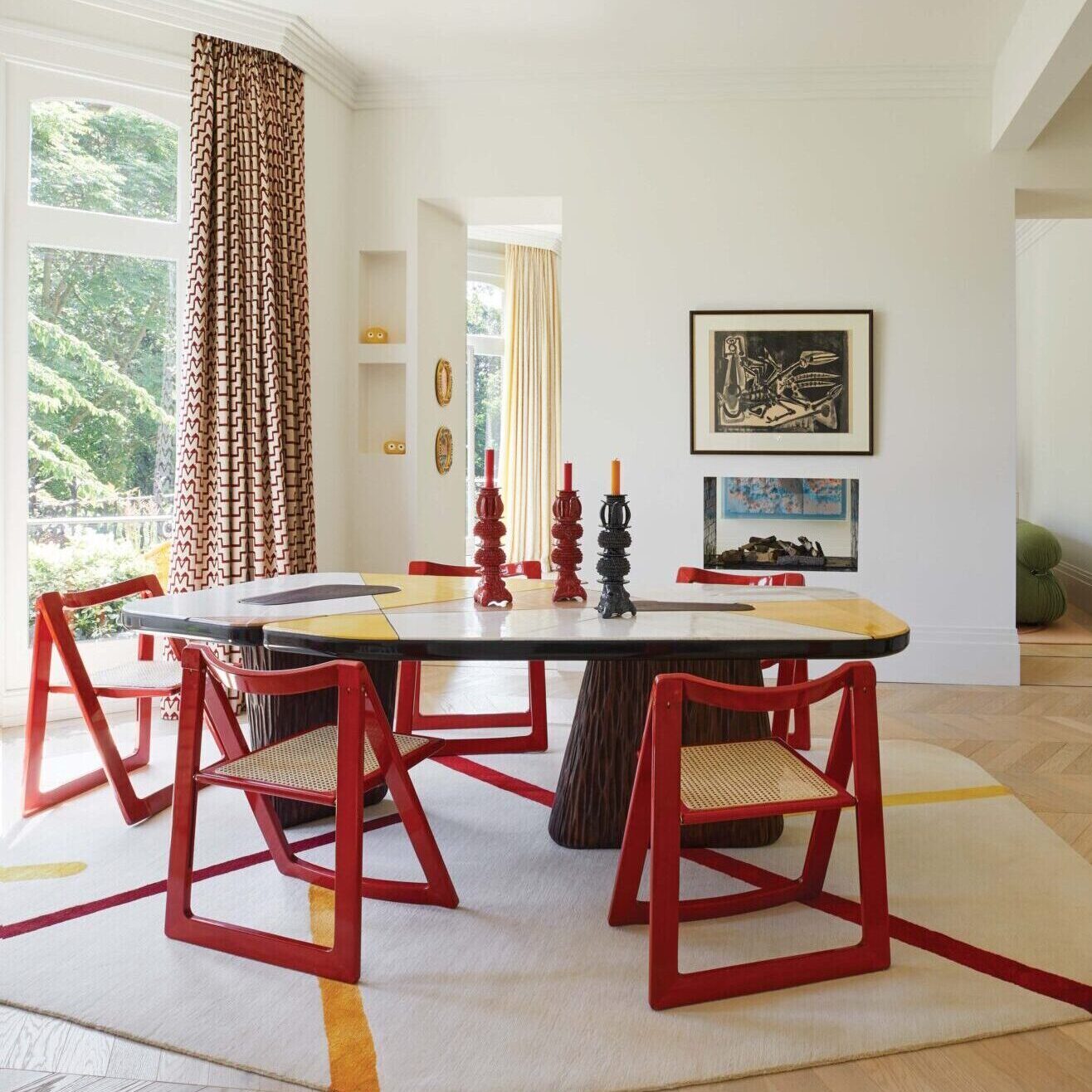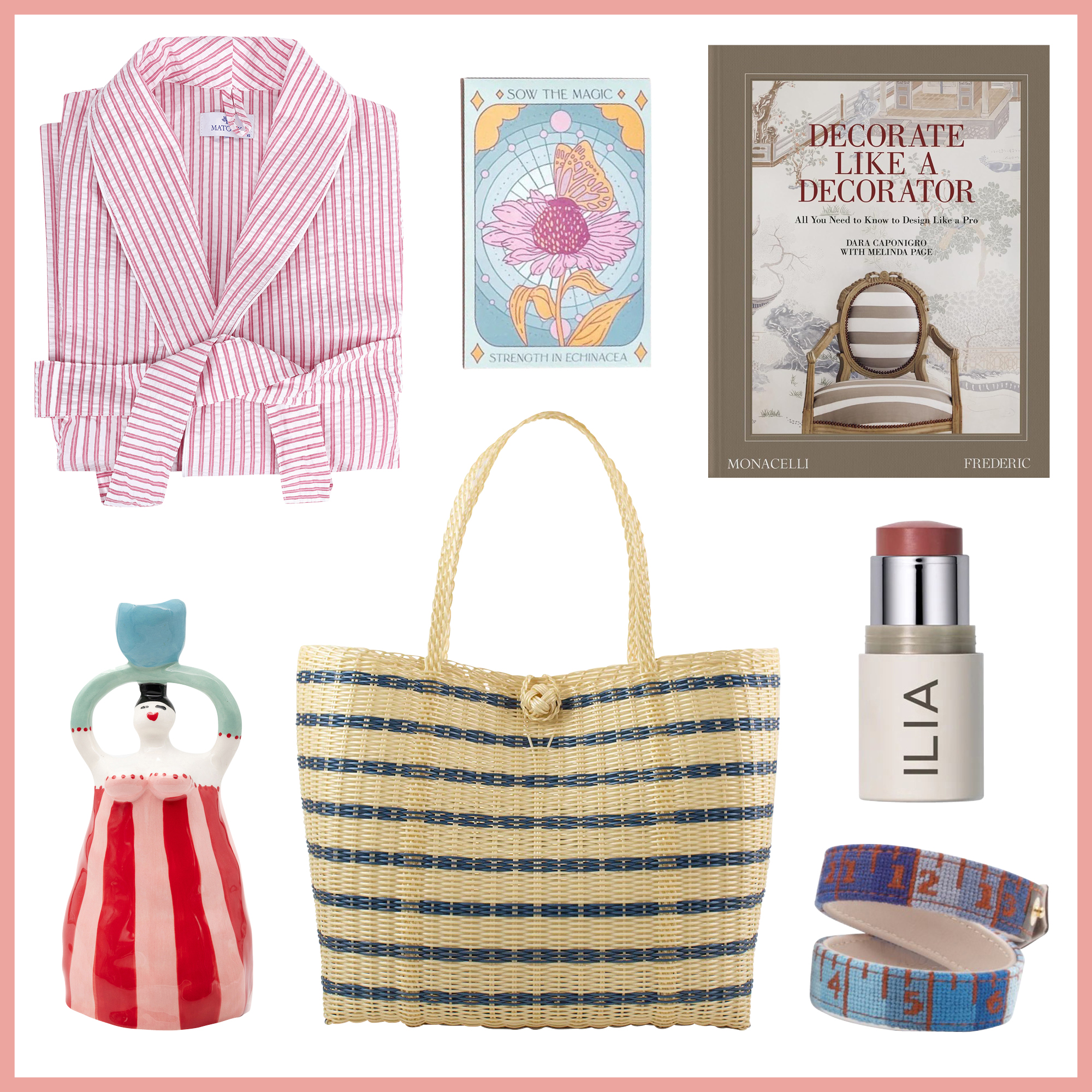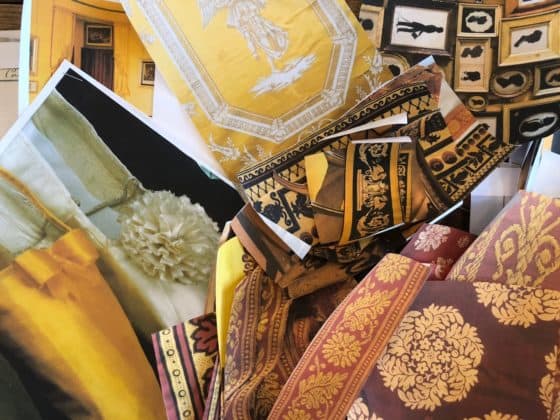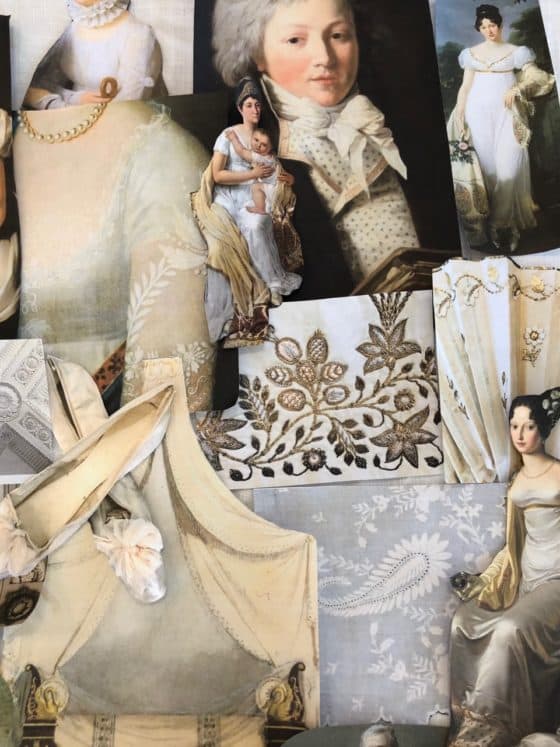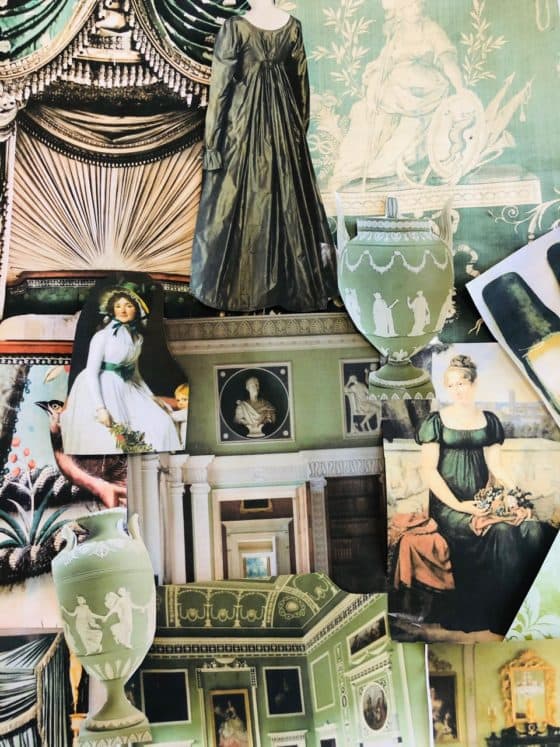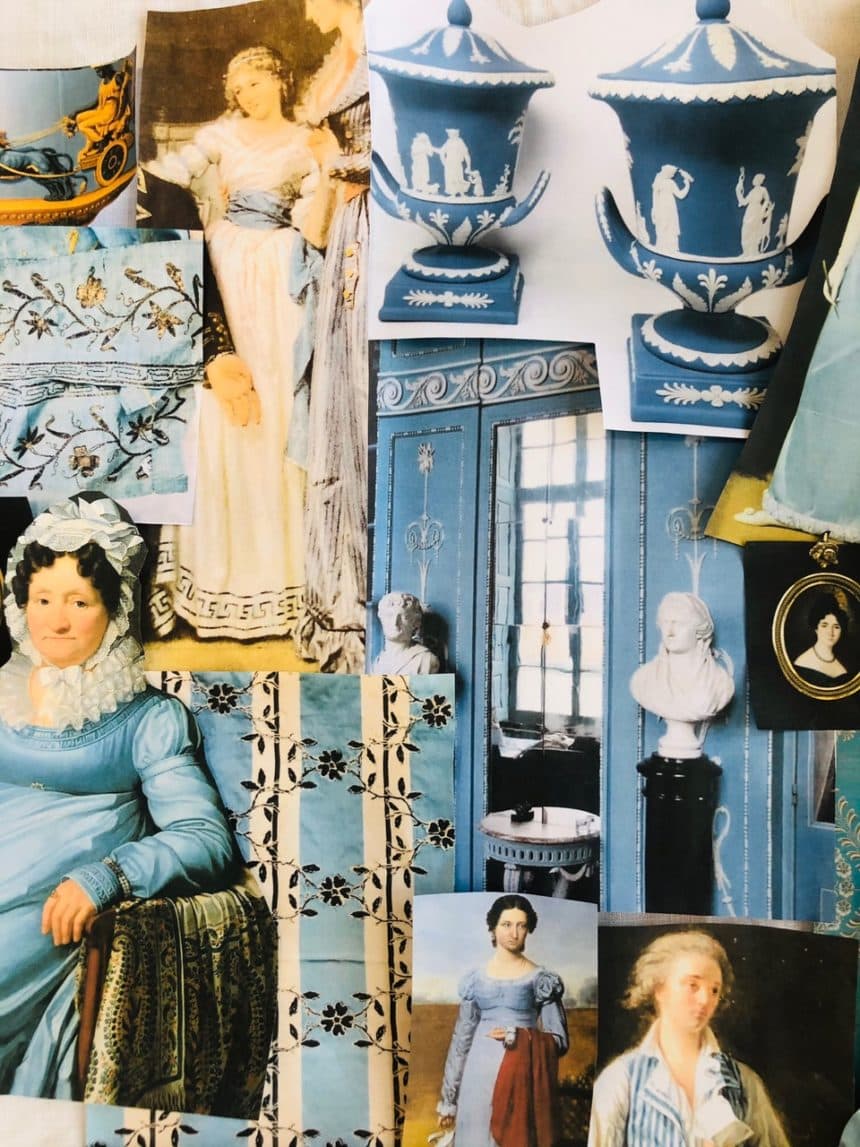Call it the Bridgerton effect. Since this runaway Regency-era hit appeared on our screens, the whimsy, elegance and bright pastel hues of this early 19th century style have seduced us all, popping up everywhere from runways to interiors.
By definition, the Regency relates to the life of the British Regent King George IV. But in terms of its general style, aesthetic, and mindset, historians generally agree that era spanned from 1795 to the early 1830’s—what is sometimes referred to as the “long Regency.” It was glamorous, free, and extravagant, all of which greatly contrasted with the austere lifestyle of George IV’s father and predecessor, the ill-fated George III. It was, as biographer Saul Davis once wrote, a “devil-may-care period of low morals and high fashion.”
In her ongoing series for Frederic, resident textile expert and art historian Jill Lasersohn takes us on a grand tour of this delightfully romantic era in all of its splendid and fashionable glory.
. . .

Lucy Pash: The Regency is defined by the free spirit, extravagance, glamour, and romance of George IV. How do you see this reflected in the general lifestyle and culture?
Jill Lasersohn: The Regency period overlapped a bit with the late Georgian aesthetic but as the Industrial Revolution started to pick up speed with trains and advances in the printing and the textile industries, George IV reigned in a new and exciting time. In 1813, gaslights emerged throughout London, which led to more late night outings and the ease and safety of travel. John Nash re-designed key areas like Regents Street and Regents Park giving Londoners a large spaces to gather and socialize. Gossip and fashion magazines and multiple newspapers kept people up-to-date on all the latest and greatest, and new money gave rise to a bump in land ownership and country estates.
LP: Did people’s behavior echo this shift in technology and the economy? In other words, did people themselves become more culturally advanced and indulgent?
JL: Yes! I can’t emphasize enough how advances in industry and the explosion of new wealth affected not only material goods and property, but also increased educational opportunities. There was more awareness and exposure to the arts, from plays and music to paintings and sculpture. Men and women could own more than a few dresses and keep up with the latest hair styles. People were both making and losing fortunes because gambling had become such a huge form of entertainment. More of the middle class could afford a carriage and traveled from the country to large cities to see museums or see a show or vice versa gave Londoners the chance to escape their urban lives and the visit the vast and impressive country estates and palaces.
LP: What were Regency interiors like?
JL: Contrary to what we may think, Regency style featured surprisingly strong colors, not soft or pastel. It was largely the walls that screamed the loudest with the brightest and boldest colors, but painted furniture was popular, as well. There were also painted wallpapers, mostly with Chinoiserie-style depictions. They used striped or color-on-color damask silks with plenty of boarders and trim. If the color wasn’t “neon pastel,” it was Pompeiin earth tones with names like “Celestial Blue,” “Maiden Blush Rose,” “Turquoise Blue Stone,” “Canary Yellow,” “Acid Yellow,” “Apple Green,” “Amaranth,” and “Etruscan Red.”
LP: What about the fashion?
JL: The French Revolution shook the foundation of Europe and as a result a new style emerged that was about as opposite as one could get from the opulent, formal and excessive fashion of the early 1700’s-1760’s. There was a pushback to simpler times, those of nature and Ancient Greek and Roman civilizations. A newly coined phrase of this era was “Antiquomania.” Women emulated Grecian models and stylish ladies were spoken of as being “well-draped” rather than well-dressed. The East India trade of the 18th century also brought in fine muslin, which was either all white and sheer, or contained metallic embroidery, tiny sprigs or Greek key motifs.
